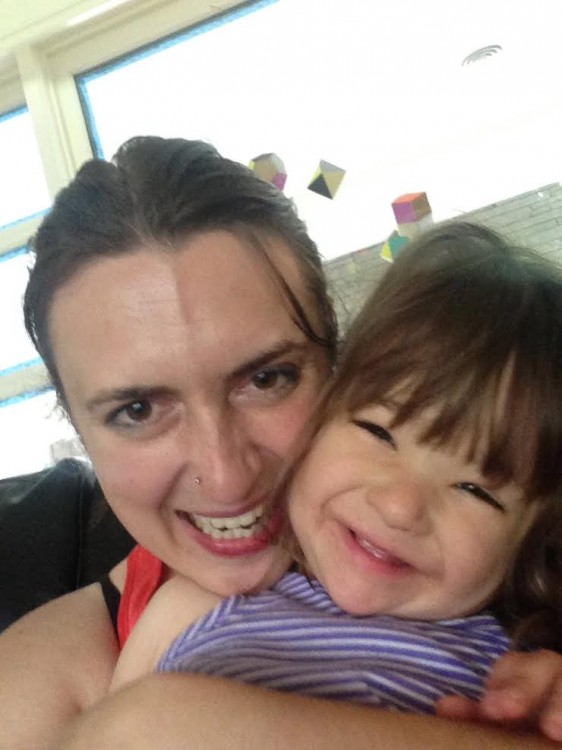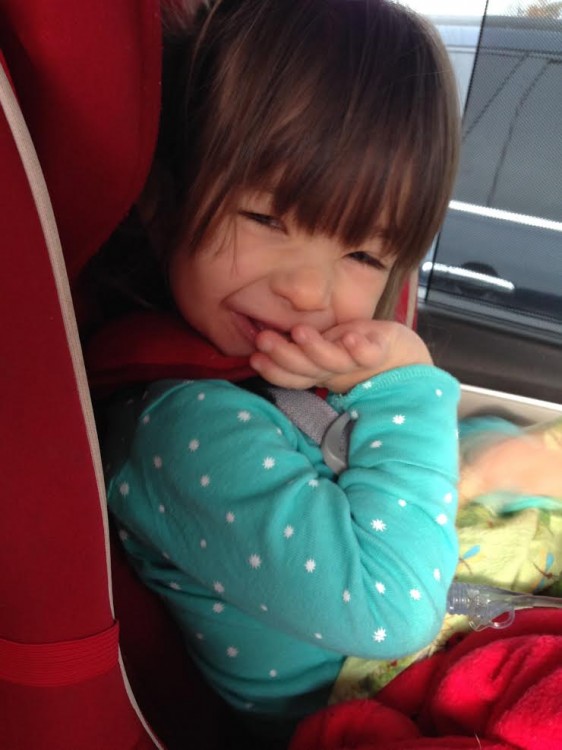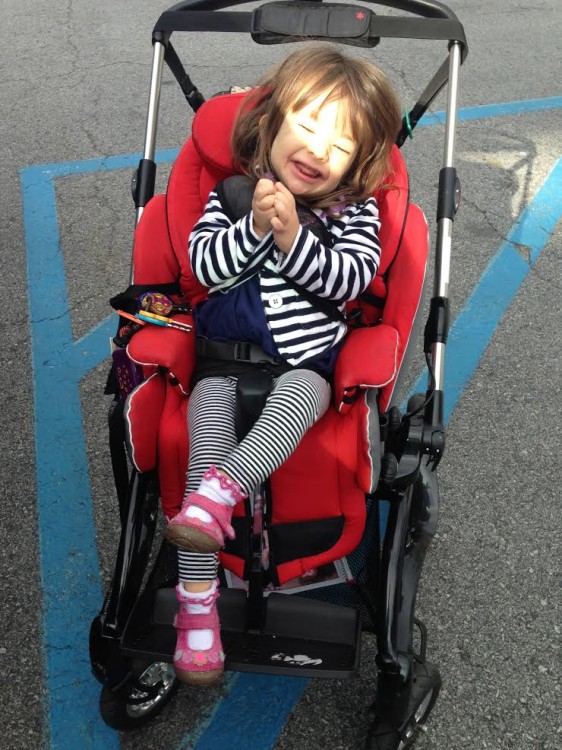Last summer I wrote about being asked if I felt loved by my daughter Esmé. At the time I quickly responded that, yes, of course, I felt loved by Esmé.
And I do. I really do.
I know beyond a shadow of a doubt that Esmé loves me deeply. I know it with the same certainty that I know I love her.
I know Esmé loves me by the thrilled sounds she makes to me.
By the way she sinks her head into the softness of my side.
By the way she looks meaningfully into my eyes as if she’s trying to transmit an important message to me.
I know by the way her emotions jump across the space between us.
I’m still so close to my daughter that I believe we often mistake each other’s body for our own. Her hands explore my mouth and hers, my fingers tickle her sides, and I laugh with delight as the tips of my fingers tickle me back; I need to remind myself to breathe when she cannot. More than four years of supporting her body, reading her motions, compensating for her weaknesses has made her an extension of my body. Her need has made me an extension of hers.
In many ways, we love each other as we love ourselves — in that honest, quiet, accepting way.
But I also know how this must look from the outside. Esmé doesn’t run to me and leap into my arms. She doesn’t speak the words, “Maman, I love you!” She doesn’t cling to my leg. Loving a mother in these ways requires understanding that we’re, in fact, two separate people. As a result, it’s the kind of love that grows in time. It’s the kind of love that develops slowly as children and parents move from the immediacy of newborn love to the acknowledgement of a child’s individuality all the way through to the respectful love that exists between adult children and their parents.
It’s a love that’s impossible without distance.
I’d be lying if I said I didn’t crave this other love from her. But I’m not certain I realized how much I craved it until last night.
In December Esmé kissed me for the first time. It was a tremendous experience. I knew she was trying hard to show me she missed me. She was more likely than not trying to do something she thought would please me. It was loving but also quite fleeting. In the manner of much of Esmé’s affection, it’s a “here one moment, gone the next” kind of experience. There’s no negotiation. Her love is ethereal. If you look at it directly it might disappear.
I accept this.
I pride myself on loving Esmé the way you can appreciate an exquisite flower — carrying the image with me without needing to pluck it, without needing to claim it.
At the same time, it’s undeniably isolating.
I grew up in a family filled with a lot of love. We’re an effusive bunch. There are hugs, squeezes, back rubs, kisses, loving words — more than enough to go around. Most of my life I have savored that love. But I have learned to live with less of it in the last few years.
Part of me has stiffened against it, afraid that the kindness might unravel me. Another part of me is determined to explore how love can exist in the less obvious spaces — how you can nurture the subtle love that grows in between words, in the clinical actions that fill much of my time with Esmé. Like in the stillness of her body for the pause between an uncontrolled hand smacking my chest and a loss-of-tone head-butt against my lip and nose.
Recently Esmé has started to hug me. At first I mistook it for a flinch — an indication that she did not want to be set down — or a little snuggling in to get comfortable on my shoulder. But, much in the manner of her kisses, she’s kept repeating the action to be certain I understand her intention. The first time it happened clearly was after I lifted her from someone else’s arms. She’d wanted me in a way I’d seen other children want their mommies but never experienced myself. She’d indicated her pleasure at our renewed closeness by squeezing me, letting go, sitting up and then returning with a squeeze.
I so appreciated it but didn’t want to look at it directly for fear of this love slipping between my fingers. “Oh Ezzy, Maman really loves your hugs, thank you!” I’d said. And we moved on.
She’d repeated the hugs a few times again over the last few weeks but not with great intensity. Until last night.
Last night she was struggling, having been awake since 1:00 a.m. with only a brief nap. I brought her into her room to change into her pajamas. I sat on the floor in front of her dresser and stood her up next to me, with my left leg and arm supporting her. I asked, “Ezzy, what color pajamas do you want tonight?” She became giddy at the prospect of her pajamas, smiling and clinking her little fingers against her teeth.
I held up a set, “Green?” She turned toward me and smiled bigger. “OK, green it is, my love.” She suddenly lunged toward me; I braced myself anticipating an unintentional smack. Instead, she wrapped her slender unruly arms around my neck, settling her mouth next to my ear as if she was going to whisper a secret to me. And then she squeezed, hard. The left arm working harder than the right, as usual.
In that moment I realized with such clarity how difficult it must be for her to do this… the coordination alone is a feat, not to mention the strength to wrap me up in her grasp.
In that moment I understood in my heart that she hasn’t been avoiding hugging me for lack of desire. She’d been unable to figure out how to do so.
When she released me and leaned back to look at me, a look of pride on her perfect little face and a clump of my hair caught in the stiffened fingers of her right hand, I crumbled, crying. Then I quietly hugged her again. She squeezed me back again, sensing my need.
We held each other for a moment and then let go.
A version of this post originally appeared on The Cute Syndrome.
Hillary Savoie, PhD, has blogged about life with her daughter Esmé since September 2012 on The Cute Syndrome Blog. Hillary is also the Founder and Director of The Cute Syndrome Foundation, which is dedicated to raising research funds for and awareness of rare disorders like PCDH19 Epilepsy and SCN8A Epilepsy. She is also the Chief Communications Maman at the Feeding Tube Awareness Foundation. Hillary tells the story of her family’s journey through her daughter Esmé’s genes as they try to find a diagnosis in her story Around And Into The Unknown, available as an individual e-book and as part of the paperback anthology 6 of 1 Travel.
Want to end the stigma around disability? Like us on Facebook.
And sign up for what we hope will be your favorite thing to read at night.



